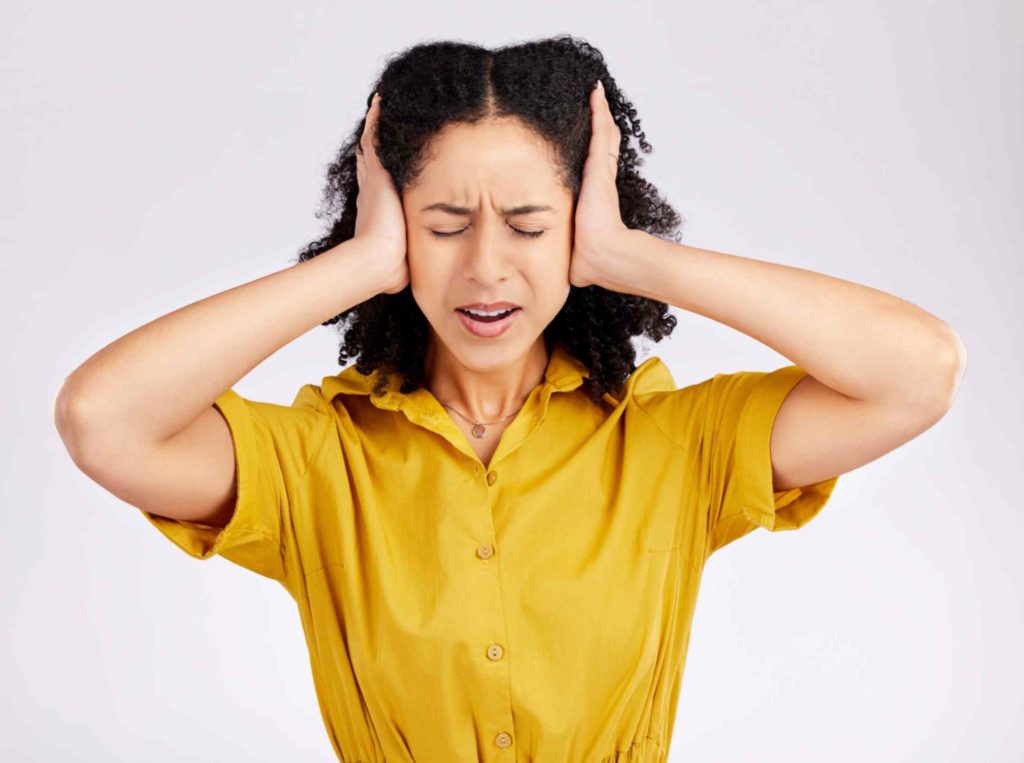
Earwax is a normal and protective substance produced by the body. But when it builds up too much, it can lead to unexpected problems, including headaches. In fact, it is estimated that around 2.3 million people across the UK require professional earwax removal each year. Given that volume, it is hardly surprising that many wonder: can earwax cause headaches? In this article, we explore how earwax buildup might lead to head pain, what symptoms to look out for, and which treatment options are safe and effective.
What Causes Earwax Buildup?
Earwax (also called cerumen) is produced naturally by glands in the ear canal. It usually moves out of the ear on its own, but sometimes it builds up and becomes compacted.
Common causes of earwax buildup
- Regular use of earphones or hearing aids
- Cleaning ears with cotton buds, which pushes wax deeper
- Naturally narrow ear canals
- Overproduction of wax
- Age-related dryness of earwax
When wax becomes hardened, it can block the ear canal. This may lead to symptoms that affect not just your hearing but also cause pressure-related discomfort in nearby areas of the head.
Can Earwax Buildup Cause Headaches?
Yes, earwax buildup can sometimes cause headaches. When wax presses against the ear canal or eardrum, it creates pressure that may radiate to the side of the head or temple, leading to a dull ache or feeling of heaviness.
How the pressure causes pain
The ear is closely linked to the nerves responsible for balance and sensory perception. When wax causes irritation or blocks the ear canal, it can trigger discomfort in the surrounding area, including:
- Headaches or migraines
- Ear pain or fullness
- Dizziness or balance issues
- Tinnitus (ringing in the ear)
While earwax itself doesn’t directly cause migraines, the tension and imbalance it creates in the ear can make existing headaches worse.
What Are the Symptoms of Earwax Buildup?
Knowing the symptoms of earwax buildup can help you address the problem early before it leads to more discomfort.
Common symptoms include:
- Blocked or muffled hearing
- Earache or itching inside the ear
- A feeling of fullness or pressure
- Occasional dizziness
- Headaches or discomfort around the temple
- Tinnitus or buzzing sounds
If these symptoms persist, professional earwax removal may be required.
What Are the Best Treatment Options for Earwax Buildup?
You should avoid trying to remove hardened earwax at home, as this can make the blockage worse or damage the ear canal. Instead, safe and effective treatment for earwax buildup is available at your local pharmacy.
Safe earwax removal methods
1. Ear drops: Over-the-counter ear drops can soften earwax, making it easier to fall out naturally. These often contain olive oil, hydrogen peroxide, or sodium bicarbonate.
2. Ear irrigation: This involves flushing the ear canal gently with warm water to remove the softened wax. It should only be done by a trained professional.
3. Ear microsuction: This is one of the safest and most precise methods for earwax removal. A small suction device is used to gently extract the wax without using water. It’s quick, comfortable, and ideal for people with sensitive ears or previous ear infections.
If you’re unsure which method is best for you, our pharmacists can assess your symptoms and recommend the most suitable treatment.
When Should You Seek Help from a Pharmacist?
If earache, dizziness, or earwax headaches persist despite using ear drops, you may have a compacted wax blockage that needs professional removal.
You should book an appointment if you experience:
- Pain or pressure in one or both ears
- Sudden hearing loss
- Headaches that worsen with ear pressure
- Dizziness or unsteady balance
- Persistent ringing or blocked sensation
Our pharmacists are trained to perform ear health assessments and provide safe wax removal treatments such as ear microsuction.
Book Professional Earwax Removal Near You
Getting your ears checked and cleaned professionally can make a big difference, not just for your hearing but also for your overall comfort and wellbeing.
If you live around Gerrards Cross, book an appointment at Aroga Pharmacy in Farnham Common today. Our experienced pharmacists can help you relieve discomfort and restore clear hearing safely and effectively.
FAQs
1. Can earwax cause headaches or migraines?
Yes, excessive earwax can sometimes cause headaches or migraines. This happens when built-up wax puts pressure on the ear canal or eardrum, creating tension that radiates to the head or temples. Removing the blockage usually relieves the discomfort.
2. What are the symptoms of earwax buildup?
The main symptoms of earwax buildup include muffled hearing, earache, itching, dizziness, a feeling of fullness, and ringing in the ears. Some people also experience mild headaches or pressure around the temples.
3. How can I safely remove earwax at home?
You can use olive oil or sodium bicarbonate ear drops to soften wax, but avoid using cotton buds or sharp objects. If symptoms persist, book a professional earwax removal service, such as ear irrigation or microsuction, to prevent ear damage.
4. What is ear microsuction, and how does it work?
Ear microsuction is a safe and gentle method for removing wax using a small suction device. It does not use water, making it ideal for people with sensitive ears or a history of ear infections. The procedure is quick and performed by trained pharmacists.
5. When should I see a pharmacist for earwax removal?
You should see a pharmacist if you have ongoing earache, hearing loss, dizziness, or headaches linked to blocked ears. Professional assessment ensures the wax is safely removed and helps rule out other causes of discomfort.
6. How can I book an earwax removal appointment near Gerrards Cross?
If you’re in or around Gerrards Cross, you can easily book an appointment at Aroga Pharmacy in Farnham Common for professional ear microsuction and earwax removal. Our trained pharmacists can help relieve symptoms quickly and safely.
